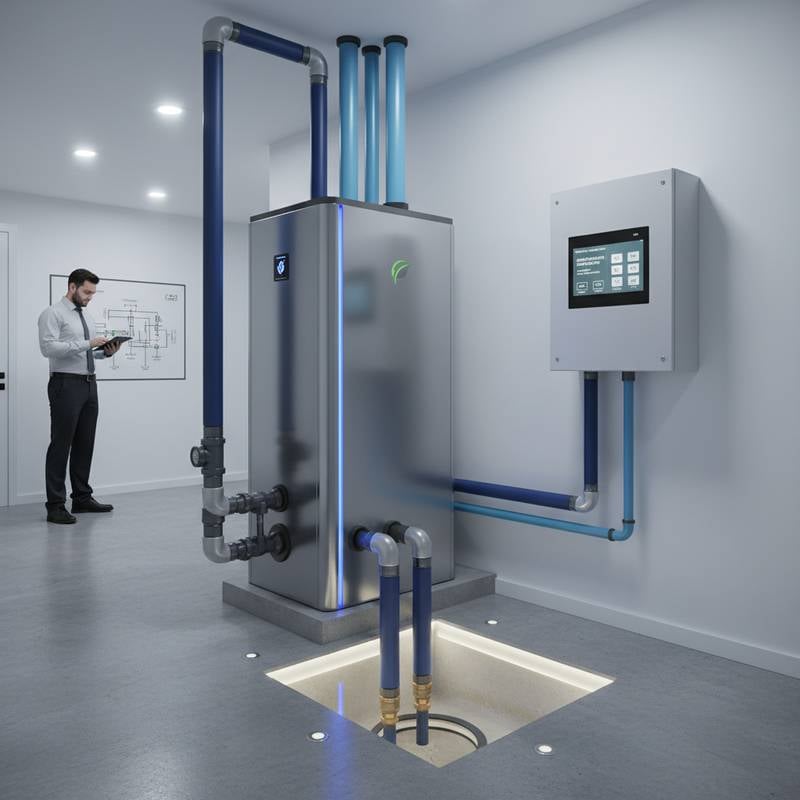Hempcrete Homes: Constructing a Sustainable Future with Carbon Capture
Picture a home that shelters you while simultaneously healing the planet. Hempcrete, an innovative bio-based building material, is redefining sustainable construction with its ability to absorb carbon dioxide, insulate naturally, and create healthier living spaces. This lightweight, eco-friendly option is gaining traction among builders and homeowners who prioritize environmental impact alongside comfort and durability. For those exploring green building solutions, hempcrete offers a compelling path forward.
Why Hempcrete Stands Out in Green Construction
Hempcrete brings a host of benefits that make it a standout choice for sustainable building projects. Consider these key advantages:
- Carbon Sequestration: It absorbs approximately 110 kilograms of carbon dioxide per cubic meter over its lifecycle, actively reducing greenhouse gases.
- Energy Efficiency: Natural insulation properties cut heating and cooling costs by 30 to 50 percent, depending on climate and design.
- Health and Safety: Non-toxic composition, mold resistance, and fire resistance ensure safer, cleaner indoor environments.
- Initial Cost vs. Long-Term Value: Construction costs run 5 to 15 percent higher than conventional materials, yet energy savings and low maintenance often balance the investment.
- Complementary Use: While not structural on its own, it pairs seamlessly with timber or steel framing for robust wall systems.
These features position hempcrete as a practical solution for eco-conscious builders, balancing upfront challenges with significant long-term rewards.
Understanding Hempcrete: Composition and Carbon Benefits
Hempcrete is crafted from the woody core of hemp plants, known as hurd, blended with lime and water. The high silica content in hemp hurd bonds with lime to form a durable, lightweight material that hardens over time while pulling carbon dioxide from the atmosphere. This carbon-absorbing process, unique among building materials, continues as the material cures, making it a true ally in combating climate change.
Beyond its environmental impact, hempcrete excels at regulating indoor humidity and temperature. Its breathable structure prevents moisture buildup, reducing mold risks and enhancing air quality. Homeowners benefit from a stable, comfortable interior without the need for extensive mechanical systems.
Hempcrete vs. Traditional Building Materials
To fully appreciate hempcrete, a comparison with conventional materials like concrete and fiberglass insulation reveals stark differences in performance and impact.
| Feature | Hempcrete | Concrete | Fiberglass Insulation |
|---|---|---|---|
| Carbon Footprint | Absorbs CO2 | High CO2 emissions | Energy-intensive production |
| Insulation Performance | Excellent thermal resistance | Poor insulation | Effective but static |
| Durability | Mold and fire resistant | Strong, prone to cracking | Vulnerable to moisture |
| Health Impact | Non-toxic, breathable | Potential chemical off-gassing | Skin and lung irritation |
| Cost Dynamics | Higher upfront, long-term savings | Lower initial, higher lifecycle | Low initial, moderate long-term |
Concrete offers structural strength at a lower initial cost but carries a heavy environmental toll. Fiberglass provides insulation but lacks hempcrete's moisture control and health benefits. For those prioritizing sustainability, hempcrete often emerges as the superior choice despite its cost premium.
Financial Realities: Costs and Savings with Hempcrete
Upfront costs for hempcrete construction typically exceed traditional methods by 5 to 15 percent, driven by material sourcing and the need for specialized labor. However, the investment pays dividends through energy efficiency, with many homeowners reporting reductions in heating and cooling expenses of up to 50 percent. Minimal maintenance needs further enhance its financial appeal over time.
In certain regions, government incentives or green building credits can offset initial expenses. Researching local programs is a wise step for prospective builders. Over the lifespan of a home, these combined savings often surpass the early cost difference, making hempcrete a sound economic choice.
Building with Hempcrete: Practical Steps and Limitations
Hempcrete cannot bear structural loads, so it must be used alongside timber or steel framing to form insulated wall systems. This hybrid approach ensures both stability and sustainability. Builders must account for this in design plans, focusing on hempcrete's role as an infill material rather than a standalone solution.
How to Begin Your Hempcrete Project
- Find a Qualified Contractor: Seek builders with specific experience in hempcrete to ensure proper installation and compliance with standards.
- Assess Energy Projections: Calculate potential reductions in heating and cooling costs based on your region's climate and home design.
- Verify Building Regulations: Confirm that local codes permit hempcrete use, as some areas may require additional permits or engineering reviews.
- Investigate Financial Support: Look into green building loans, tax credits, or rebates that can ease the upfront financial burden.
Following these steps helps streamline the process, aligning your project with both practical and environmental goals.
The Hempcrete Living Experience
Homes built with hempcrete offer a noticeably different atmosphere. Stable temperatures and balanced humidity levels create year-round comfort, while the material's sound-dampening properties contribute to a quieter interior. Residents often describe a natural, grounded feel to their spaces, free from the synthetic odors or irritants associated with some conventional materials.
Taking Action for a Greener Home
Hempcrete presents an opportunity to build or renovate with the planet in mind, delivering a home that conserves energy, improves health, and captures carbon. Start by identifying experienced contractors in your area and evaluating the potential savings unique to your situation. Researching available incentives can further tip the scales in favor of this sustainable choice. With hempcrete, you are not merely constructing a house; you are crafting a legacy of environmental stewardship.








